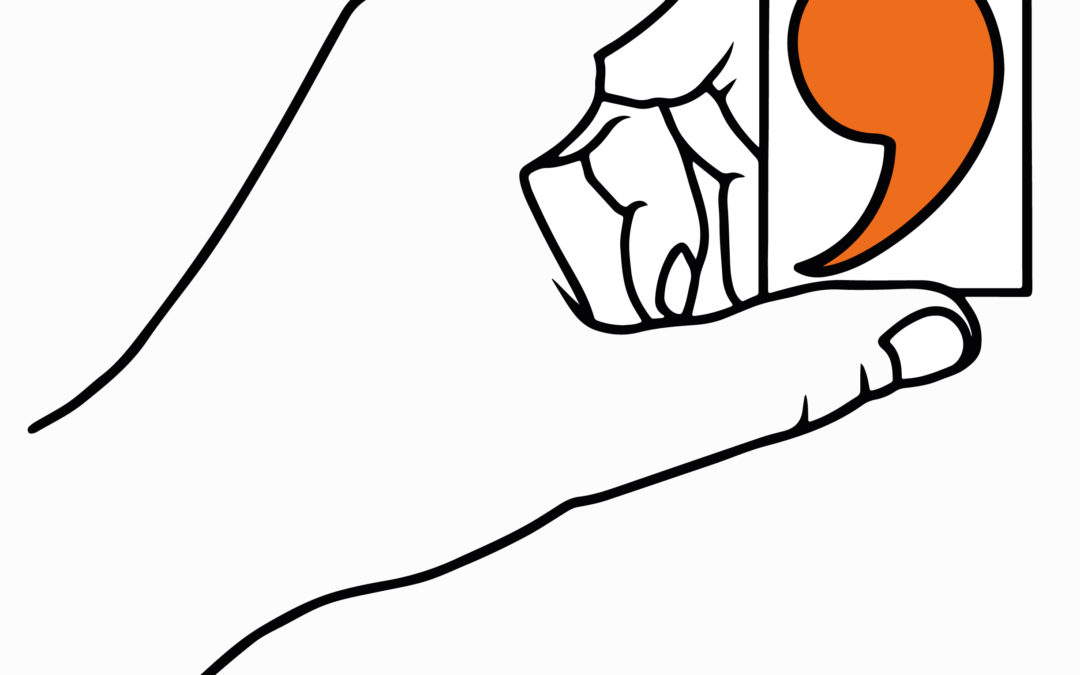
by Erica L. Meltzer | Jul 26, 2020 | Blog
The question of when to use a comma with so vs. so that vs. so…that isn’t normally tested on any standardized test I’m familiar with, but I’ve noticed a lot of confusion about it in various people’s writing recently, and so I wanted to address it here.
Essentially, the issue is that while all three constructions involve the word so, they’re actually three different types of conjunctions, and that in turn affects how they are punctuated.
So… (pun intended), here goes:
1) So by itself – synonym for therefore
So is a coordinating (FANBOYS) conjunction that serves to connect two independent clauses (complete sentences). Like the other FANBOYS conjunctions (for, and, nor, but, or & yet), so must follow a comma when it is used this way.
Incorrect: The skin is located at the interface between our body and the outside world so its cells can respond to many different kinds of stimuli.
Correct: The skin is located at the interface between our body and the outside world, so its cells can respond to many different kinds of stimuli. (more…)
by Erica L. Meltzer | Sep 1, 2013 | ACT English/SAT Writing
I think it’s fair to say that the ACT really, really likes to test commas. I’ve never done a statistical analysis, but I’d wager that it’s around 15-20%.
But while the ACT does test commas in many different ways, the reality is that you don’t have to know every last rule governing comma usage. As long as you know the major ways in which commas are used correctly, you can probably identify when a comma is not being used correctly.
So that said, here are the contexts tested on the ACT that require you to absolutely, conclusively use a comma:
1) Before a FANBOYS (coordinating) conjunction when joining two independent clauses
Example: London is a very old city, and it contains buildings from many different eras.
2) To set off a non-essential clause that can be removed from a sentence
Example: London, which is a very old city, contains buildings from many different eras.
3) Between items in a list
Example: London contains buildings from time periods including the Middle Ages, the Renaissance, and the Victorian era. The third comma is optional, by the way. Since the sentence is correct both with and without it, you’ll never be tested on that particular usage.
4) To separate multiple adjectives whose order could be reversed
Example: London contains many interesting, eclectic neighborhoods, OR London contains many eclectic, interesting neighborhoods.
When you see a comma, ask yourself whether it’s being used in one of the above ways. If it isn’t, you can be relatively certain that you should choose an answer that doesn’t include it.

by Erica L. Meltzer | Apr 3, 2012 | ACT English/SAT Writing
This is another one of those finicky little rules that have the potential to show up on the SAT and ACT. It’s an annoying one because it involves not one but two kinds of punctuation, in this case commas and parentheses (which aren’t tested all that frequently), but it’s not overly tricky to apply. In fact, if you look back at the previous sentence, you’ll see that I just used it.
Here’s the whole rule:
It is never acceptable to use a comma before an open parenthesis, but it is sometimes acceptable to use a comma after a close parenthesis.
In other words, the construction below is always incorrect:
Incorrect: The Caribbean Sea contains some of the world’s most stunning coral reefs, (which are home to thousands of species of marine life) but many of them are in danger because of overfishing and pollution.
It also means that you cannot do the following: (more…)

by Erica L. Meltzer | Mar 19, 2011 | ACT English/SAT Writing
Note: because of the extreme popularity of this post, I’ve made it available as a PDF download.
Way back in the olden days when American schools regularly taught grammar, many students learned that a comma should automatically be placed before a person’s name or the title of a book, magazine, etc.
In reality, however, that’s not quite true. The inclusion of a comma actually depends on the circumstances, and having a comma vs. no comma can dramatically change the meaning of a sentence. (more…)
by Erica L. Meltzer | Mar 13, 2011 | ACT English/SAT Writing
This is one of the most common errors involving commas on the ACT, and it’s one that’s very easy to identify and fix.
A compound item is simply two nouns or verbs joined by the word “and.” The rule is that you never need a comma before the “and.”
If the grammatical terminology makes you too nervous, there’s also a great shortcut: comma + and = period, and if you plug in a period, you won’t have two full sentences. Since the period isn’t correct, “comma + and” isn’t correct either.
Compound Subject Errors
Incorrect: The cover, and the binding of the old book are beginning to disintegrate.
Period replaces “comma + and:” The cover. The binding of the old book are beginning to disintegrate.
Correct: The cover and the binding of the old book are beginning to disintegrate.
Compound Object Errors
Incorrect: The book has many pages, and illustrations.
Period replaces “comma + and:” The book has many pages. Illustrations.
Correct: The book has many pages and illustrations.
Compound Verb
Incorrect: The cover of the old book is beginning to fade, and disintegrate.
Period replaces “comma + and:” The cover of the old book is beginning to fade. Disintegrate.
Correct: The cover of the old book is beginning to fade and disintegrate.


